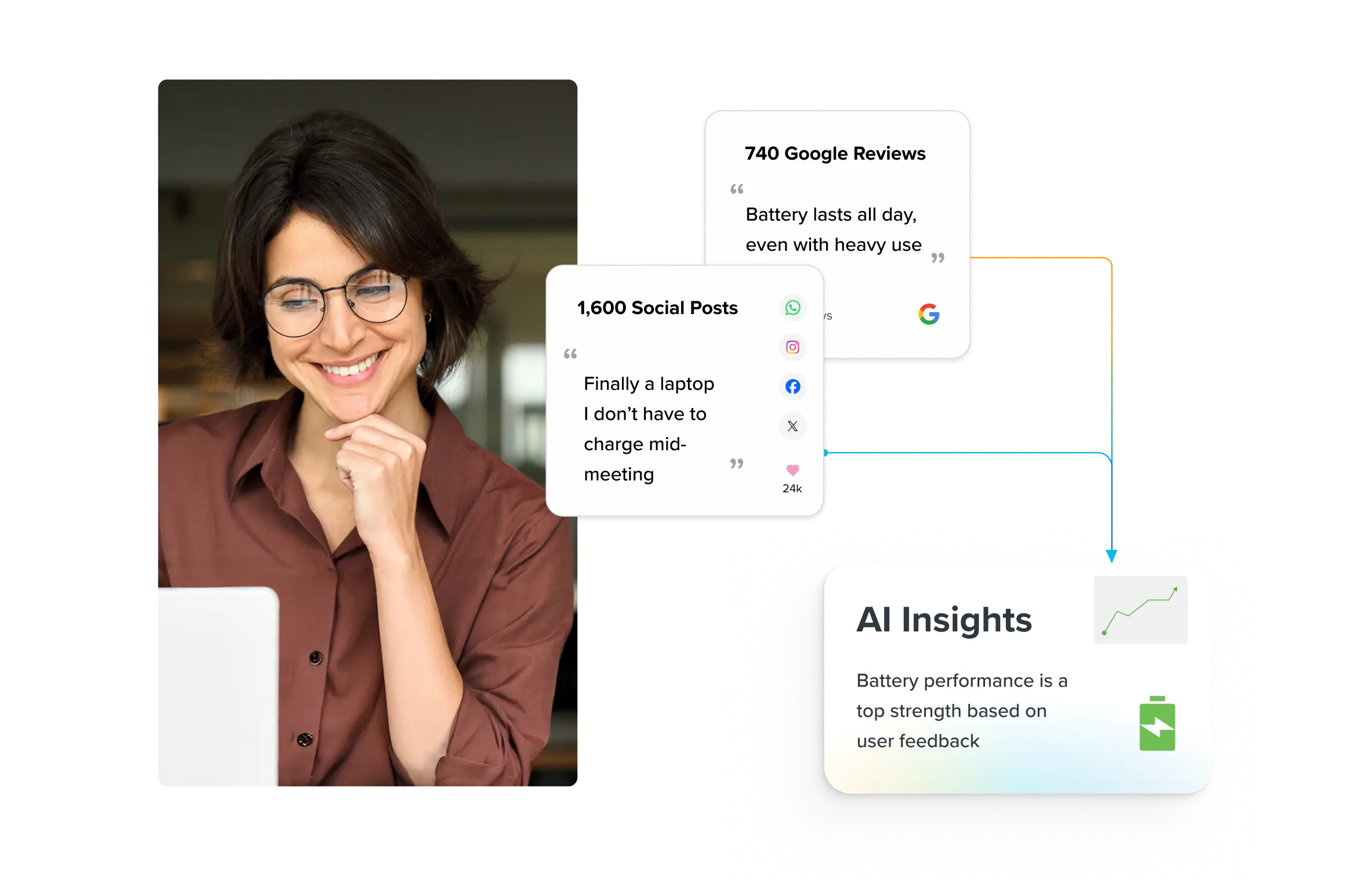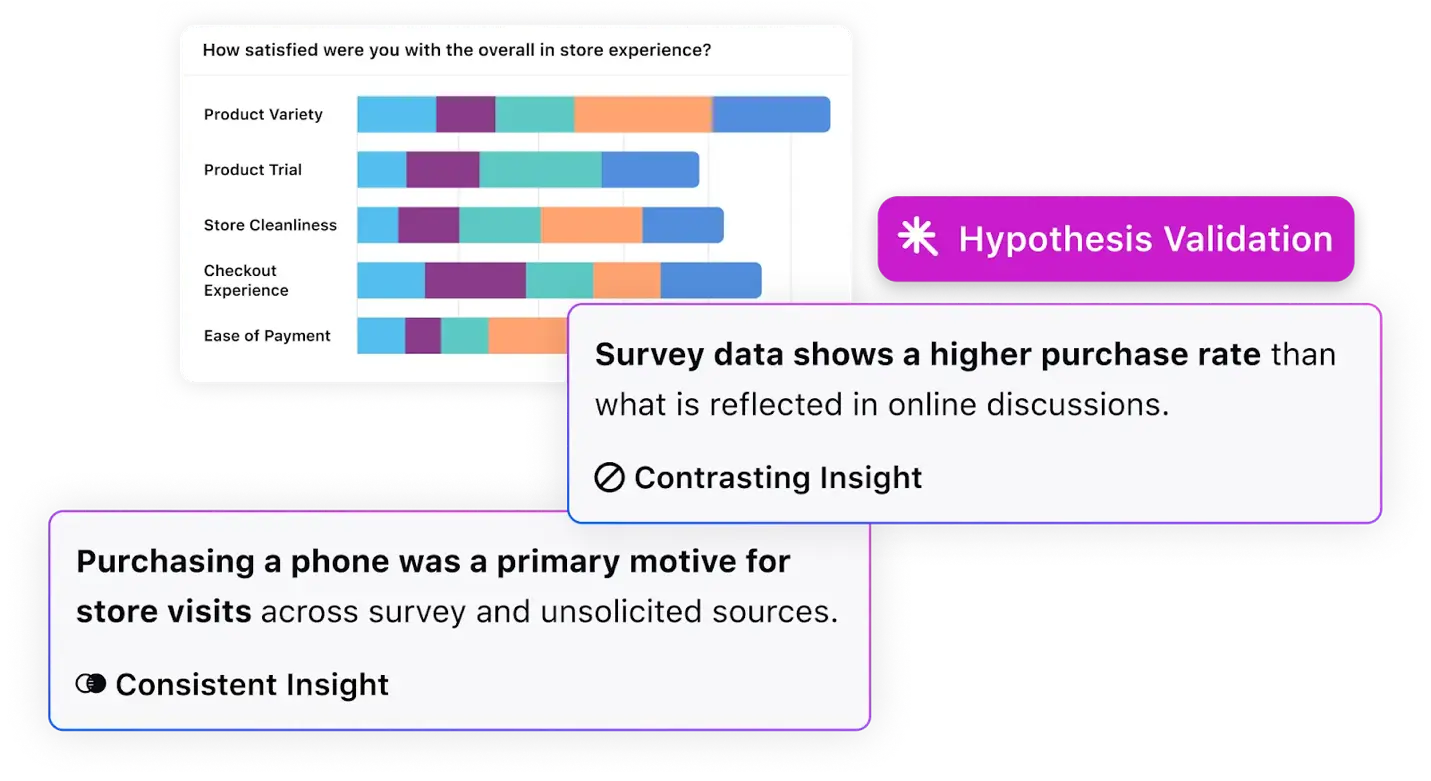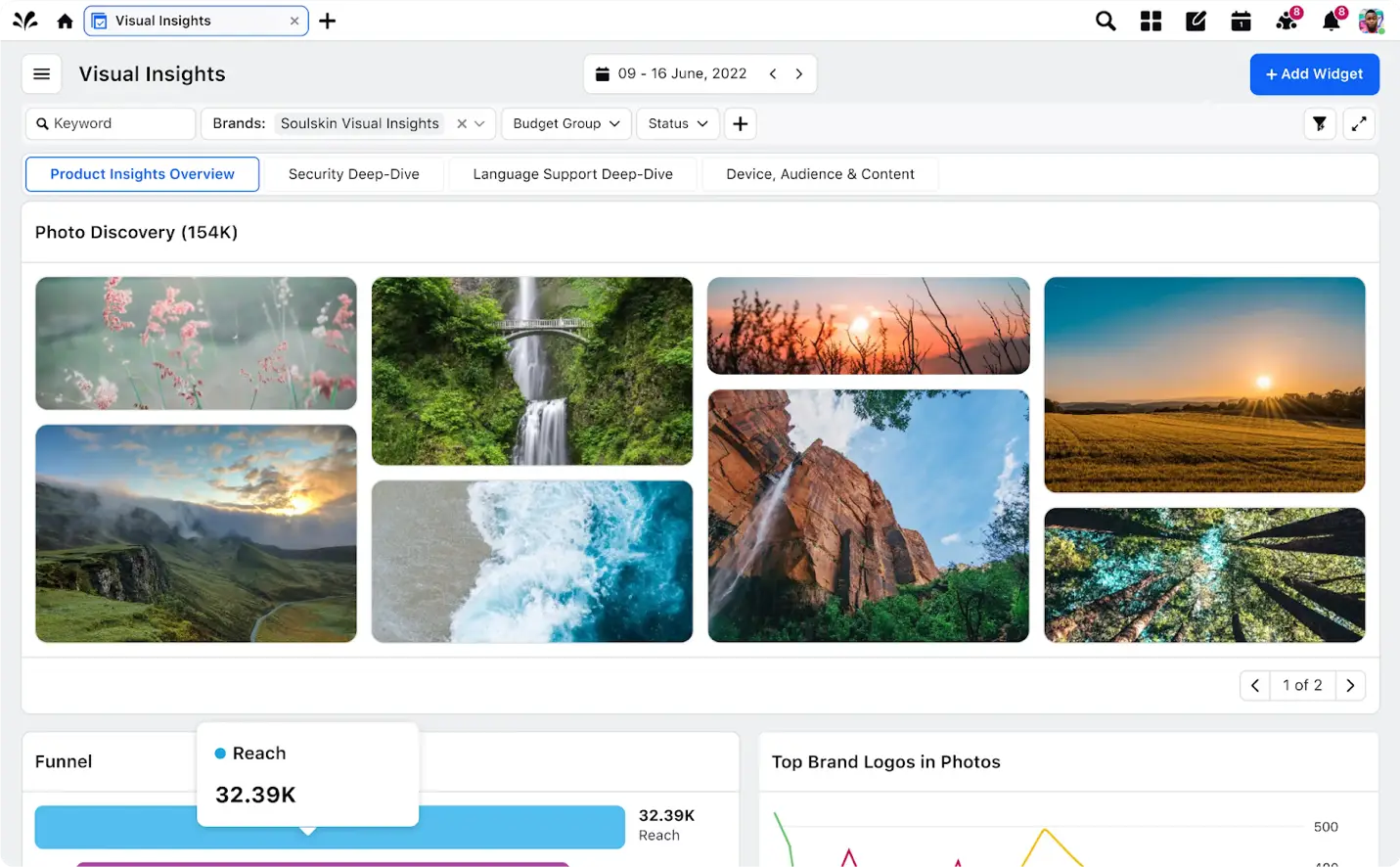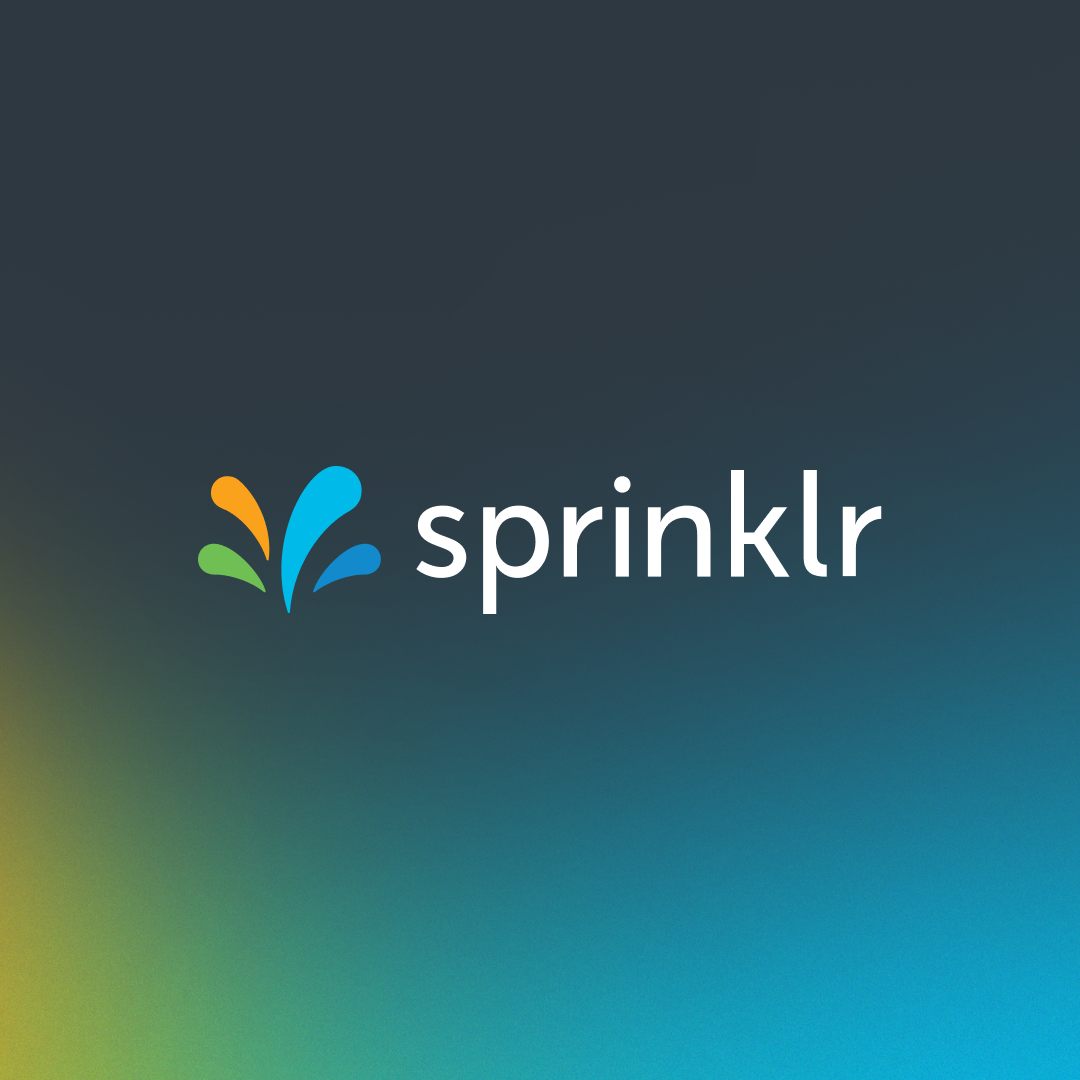Elevate CX with unified, enterprise-grade listening
Sprinklr Insights gives you real-time consumer, competitor and market intelligence from 30+ channels without the noise. Make smarter decisions, strengthen your brand, and stay relentlessly customer-led.

Customer Profiling Methods: How To Use + Template
A 2025 study warns that customer profiling based on outdated assumptions increases the risk of service failures.
Here’s the thing: the challenge for your chief customer and experience officers isn’t just knowing your audience; it’s understanding their tastes and preferences, pleasures and pain-points, so that they can use the data to deliver personalized marketing, support, experiences, and so on.
Now, imagine relying solely on demographics like age or gender to create customer profiles. It not only biases the data lake with genericism but also causes costly service failures.
For example, if you assume that all Gen-Zers prefer chatbots, you may alienate those who want human support. Or target women with parenting ads, which could backfire for non-parents, hurting relevance and trust.
AI-powered customer profiling is turning the tide against these painfully basic profiles and their adverse consequences.
There is a shift toward behavioral, sentimental, and ethical customer profiling methods that leverage publicly available unstructured data and AI.
They integrate traditional feedback channels that you’re comfortable with and supercharge the data with public and transaction data to create incredibly insightful profiles.
Here’s all you need to know about building relevant customer profiles using AI-powered tools.
Various methods of customer profiling: Traditional methods
Customer profiling blends qualitative and quantitative approaches to deliver who, why, and what behind customer behavior. Enterprises typically combine traditional and digital approaches.
Traditional customer research methods provide zero-party qualitative insights that reveal motivations, pain points, and expectations, which quantitative data alone often misses.
Moreover, traditional methods like surveys are no longer purely archaic. As AI becomes more democratic, you’ll see more of its applications seep into the traditional systems as well.
1. Surveys
Surveys remain among the most effective tools for collecting structured data about demographics, preferences, behaviors, and satisfaction levels.
Here’s an example of a customer experience feedback survey created on Sprinklr Insights that looks and feels the same on every device👇
🎓Learn: What are customer surveys
If you’re an enterprise, using an omnichannel approach will ensure that you are capturing feedback from customers where they are to build different types of profiles based on your end goal.
Steps to build a customer profile using surveys:
- Define objectives: Establish what you want to learn (e.g., demographics, buying behavior, satisfaction)
- Craft targeted questions: Include closed ended (e.g., "What is your age?") and open-ended questions (e.g., "What motivates you to choose our product?"). You’ll need survey software to set the surveys and distribute them
- Distribute across channels: If you use omnichannel survey tools like Sprinklr, you’ll be able to deploy them via email, SMS, social media, or in-app prompts — and even QR codes
- Analyze responses: Again, if you use AI-powered tools, it’ll help you identify patterns and segment customers based on their answers. If you still rely on manual analysis, you’ll spend a significant time doing this analysis, rather than refining profiles and priming them for action
- Refine profiles: Utilize the survey insights into your customer profile template for ongoing optimization
- Roll out actions: Implement an action plan with key stakeholders to begin acting upon survey responses. If you’re using Sprinklr’s Unified-CXM platform, you can act directly on the platform
⚡Pro tip: Use Sprinklr’s AI-powered survey platform to gather structured data for your customer profile, including automatically asking dynamic questions based on responses to get the most accurate insights.
That’s not even the best part. After you collect the survey data, elevate it with an incredibly large database — from social, digital channels, review sites, and service interactions — to verify its relevance and smooth out anomalies. All these on the same unified platform.

👓Read more: What is omnichannel customer experience [detailed guide]
2. Focus groups and interviews
Focus groups bring together six to 10 carefully selected participants to simulate real conversations around a specific goal, such as product dashboard, user experience, etc. This uncovers group-driven insights that surveys often lack.
For example, a financial services firm can use focus groups to evaluate a new two-factor authentication flow for its mobile app.
Participants identified the multi-step process as overly complex, flagging it as a deal-breaker.
This feedback led the UX team to simplify the login to a single tap plus biometric confirmation.
3. Observational research
Watching users interact with products in real-world settings helps surface friction points that self-reported data won’t reveal.
For example, e-commerce brands use heatmaps to track clicks, scrolls, and rage-clicks, exposing patterns that highlight what users truly engage with — and what they ignore, like oversized banners or non-interactive visuals.
An online retailer can use this insight to redesign its homepage to increase the click-through rates for product pages.
💡Pro info: Computer vision is an emerging field in observational research that uses AI/ML and neural networks to track the use of brand elements like logos in unstructured user-generated content.
Sprinklr Visual Insights is a platform built on computer vision

4. Field trials and review mining
Field trials, such as beta programs and test prototypes in real environments.
VSP, a vision care leader, ran a six-week beta of its new patient portal across select clinics.
Real-world usage revealed privacy concerns, prompting the addition of advanced encryption before the full rollout.
Meanwhile, review mining offers large-scale insights from unsolicited customer feedback.
Microsoft’s Social Intelligence Practice (SIP) team used Sprinklr Insights — a consumer insights platform — to track over 8.6 billion mentions about hybrid work in a year.
Sprinklr’s AI-powered social listening helped Microsoft “listen” to direct customer feedback from 30+ channels, including physical, industry discussions, and even competitive comparisons — gleaning sentiment, feature gaps, and emerging trends.
These insights directly influenced Microsoft’s product and feature roadmaps, including new enhancements for hybrid work settings based on sentiment captured from broader market conversations.
Key technologies for real-time customer profiling
Modern customer profiling uses digital analytics, AI, and machine learning to build real-time, data-rich customer profiles.
These profiles reflect live behavior across web, mobile, social, and in-store touchpoints, which helps hyper-personalized marketing and support.
These are the key technologies for real-time customer profiling:
- 👂 Social listening captures millions of public conversations to identify customer sentiment and emerging trends.
- 👣 Digital footprint analysis, which tracks browsing, app usage, purchase behavior, and social engagement.
- 🔮 Predictive analytics, which anticipates future behavior, such as churn or conversion.
- ⏰ Real-time profiling stitches together data from disparate sources to create a unified, actionable customer view.
Let’s explore how customer profiles are built using these technologies, particularly social listening:
🔥Build incredibly rich customer profiles using real-time data from 30+ channels
Sprinklr Insights integrates 30+ social and digital channels, 400K+ media sources, 1B+ websites, review sites, owned data, and powerful Audience Insight tools so you can build true-to-life customer profiles.

How to build a customer profile using social listening tool
Social listening involves monitoring and analyzing public online conversations to understand how people perceive your brand, competitors, and industry trends.
To “listen” to online conversations, you need tools like Sprinklr Insight’s social listening, which processes over a million conversations daily across several digital channels.
It then transforms unstructured text into structured insight, classifying sentiment, emotion, intent, and topics at scale.
Here’s a stepwise guide to build a customer profile using social listening:
Step 1: Define your objective
Start with clarity: What do you want to learn or solve? Examples include:
- Gauging brand sentiment during a campaign launch
- Identifying unmet customer needs or recurring complaints
- Tracking competitor reputation and positioning
- Tracking customer feedback from offline sources
Step 2: Select relevant platforms
Choose listening sources based on where your audience is active:
- Instagram for Gen Z and Millennials
- LinkedIn for B2B decision-makers
- Reddit and Twitter for unfiltered opinions and trends
On Sprinklr Insights, you can listen from 30+ sources spanning social media, websites, review sites, print, and more.
When you create a social listening query on Sprinklr, you can choose a source, which in this example is review sites from around the internet 👇
If you’re using the Quick Search feature, you can filter the listening source after you’ve run it.
Step 3: Analyze conversations using AI
If you use Sprinklr Insights, native AI models automatically:
- Analyze billions of conversations focused on your query on 30+ channels
- Track and flag sentiment shifts over time
- Detect recurring themes in customer praise or frustration
- Identify emerging opportunities, like new product features being requested
Here’s an example of Sprinklr Insight’s Product Insights dashboard — social listening built specifically for products — alerting to a rising negative sentiment and mentions around a product line.
Note how AI highlights the impacted products, number of mentions, time stamps, themes, etc., in one unified view 👇
Step 4: Segment your audience
Now that you have the relevant conversations, you will use these insights to group audiences by behaviors, concerns, or needs, such as price-sensitive buyers, feature-focused users, or early adopters.
🦮 Here’s a detailed guide to customer segmentation.
You can follow any method to segment or use Sprinklr's built-in Audience Insights tools to research audiences further and segment them into specific profiles.
Just so you know, you can access three audience research reports out of the box on Audience Insights👇
- Followers network report - Brand affinities of your audience by analyzing the accounts they follow
- Audience Study - The customer profiling OG: demographics, interests, preferences, brand affiliations, and powerful content analytics
- Profile Impersonation Reports - Identifying similar or impersonating Twitter accounts to prevent brand reputation risks
Step 5: Integrate into dynamic profiles
Once you’ve segmented and sanitized the profiles, feed them into a customer profile template that updates in real time.
Here’s a resource on how to create a dynamic audience profile using Sprinklr’s Audience Insights.
This enables marketing, product, and support teams to respond with precision, whether it's offering tailored messaging, surfacing relevant content, or resolving issues proactively.
👓 Read more: Social listening: A complete guide
Data-driven customer profile templates for enterprises
Building customer profile templates from scratch? Here are the key components of an effective enterprise-grade customer profile:
Component | Details and examples |
Demographics | Age, gender, income, location, occupation. E.g., “Male, 35–45, $80K+, lives in NYC.” |
Psychographics | Interests, values, lifestyle, and personality traits. E.g., “Tech-savvy, eco-conscious.” |
Behavioral data | Purchase frequency, loyalty activity, and engagement history. E.g., “Buys monthly online.” |
Technographics | Devices, platforms, and app usage. E.g., “iOS user, active on Instagram & LinkedIn.” |
Pain points & goals | Specific needs or frustrations. E.g., “Wants fast delivery, seeks sustainable options.” |
Customer journey | Funnel stage: Awareness, Consideration, Purchase, Retention, Advocacy. |
Feedback & sentiment | NPS scores, survey data, and social sentiment. E.g., “NPS 8, positive reviews on Reddit.” |
Value potential | LTV, upsell/cross-sell potential, referral likelihood. E.g., “High LTV, advocate.” |
Steps to build a reusable and scalable customer profile template:
Step 1: Identify high-value customers
Start by analyzing your current customer base to single out top-performing accounts. This may include the highest revenue, repeat purchases, or strong advocacy.
These become your “super-users” and form the foundation of your ICP.
Step 2: Conduct in-depth interviews
Engage directly via interviews or roundtables with eight to 12 high-value customers.
Ask about their business objectives, challenges, decision-making processes, and how they discovered your solution.
These insights uncover the real drivers behind their purchase decisions.
Step 3: Analyze and codify common traits
Aggregate qualitative and quantitative data to uncover patterns in company size, industry, buyer roles, purchase triggers, and more.
Use stats like average deal size or time-to-close to identify the attributes of ideal-fit customers.
Step 4: Design your profile template
Translate these attributes into a structured template covering firmographics, technographics, decision committee structure, pain points, preferred channels, etc.
Keep it simple enough to be widely adopted across teams.
Step 5: Validate and iterate
Pilot the template for real-world campaigns and sales cycles. Track metrics like engagement rate, conversion velocity, and churn.
Refine attributes and thresholds as you gather feedback and evolving trends emerge.
Step 6: Operationalize across functions
Embed the template into your CRM, lead scoring, marketing automation, and product planning.
Educate teams on usage, for example, using ICP-based segmentation for ABM campaigns or prioritizing high-fit accounts in sales pipelines.
Here’s what a sample customer profile template can look like:
How to integrate customer profiling into your brand strategy
To fully operationalize customer profiling, organizations must link profile data to strategic outcomes.
This means moving beyond segmentation to using customer intelligence to influence how decisions are made, tested, and scaled across the business:
Actionable steps for strategic integration:
Step 1. Map profile attributes to business outcomes - Identify the customer characteristics most correlated with business goals like conversion, retention, or average order value.
Prioritizing these attributes ensures profiling focuses on insights that drive measurable impact.
Step 2. Develop profile-driven decision frameworks - Embed customer insights into marketing campaign planning, service workflow optimization, or assortment strategy to ensure consistent application across functions.
Step 3. Establish performance metrics tied to profiling - Define KPIs such as profile completeness, personalization accuracy, and contribution to business impact (e.g., lift in NPS, revenue per customer) to measure how effectively profiling informs decisions.
Step 4. Assign cross-functional profile ownership - Move beyond siloed control. Shared ownership across marketing, analytics, CX and operations ensures multiple touchpoints enrich profile data and remain relevant across the organization.
Step 5. Institutionalize profile-based experimentation - Design continuous testing programs to validate customer behavior and preferences assumptions.
This creates a feedback loop to refine profiles based on real-world performance.
Driving data-driven growth with customer profiling
Customer profiling is indispensable for your enterprise strategy if you want to deliver personalized experiences that fuel engagement, loyalty, and revenue growth.
Advanced platforms like Sprinklr Insights help you unify cross-channel data, surface actionable trends, and continuously refine your understanding of customer behavior.
Whether segmenting audiences for precision marketing or anticipating needs through AI-powered analytics, customer profiling helps you stay agile in a competitive landscape.
Ready to unlock the full potential of customer profiling? Book a demo to see how Sprinklr Insights can elevate your customer experience strategy.
Frequently Asked Questions
Key elements include demographics (age, gender, income, location), psychographics (values, interests, lifestyle), behavioral data (purchase history, interactions), technographics (device and software usage), and pain points or goals.
Customer profiling enables personalized marketing, improves retention, and optimizes resource allocation. Profiling insights help businesses identify customer pain points and preferences.
AI enables real-time analysis, predictive modeling, and pattern recognition. It uncovers hidden trends, anticipates needs, and refines profiles dynamically, empowering more precise targeting and engagement.
Be transparent about data use, collect only what’s necessary, and use platforms with built-in GDPR and CCPA compliance, like Sprinklr, to ensure secure, ethical data handling.
Unified profiles enable consistent personalization, real-time adaptation, and smarter decisions across channels, driving better customer experiences and business results.











